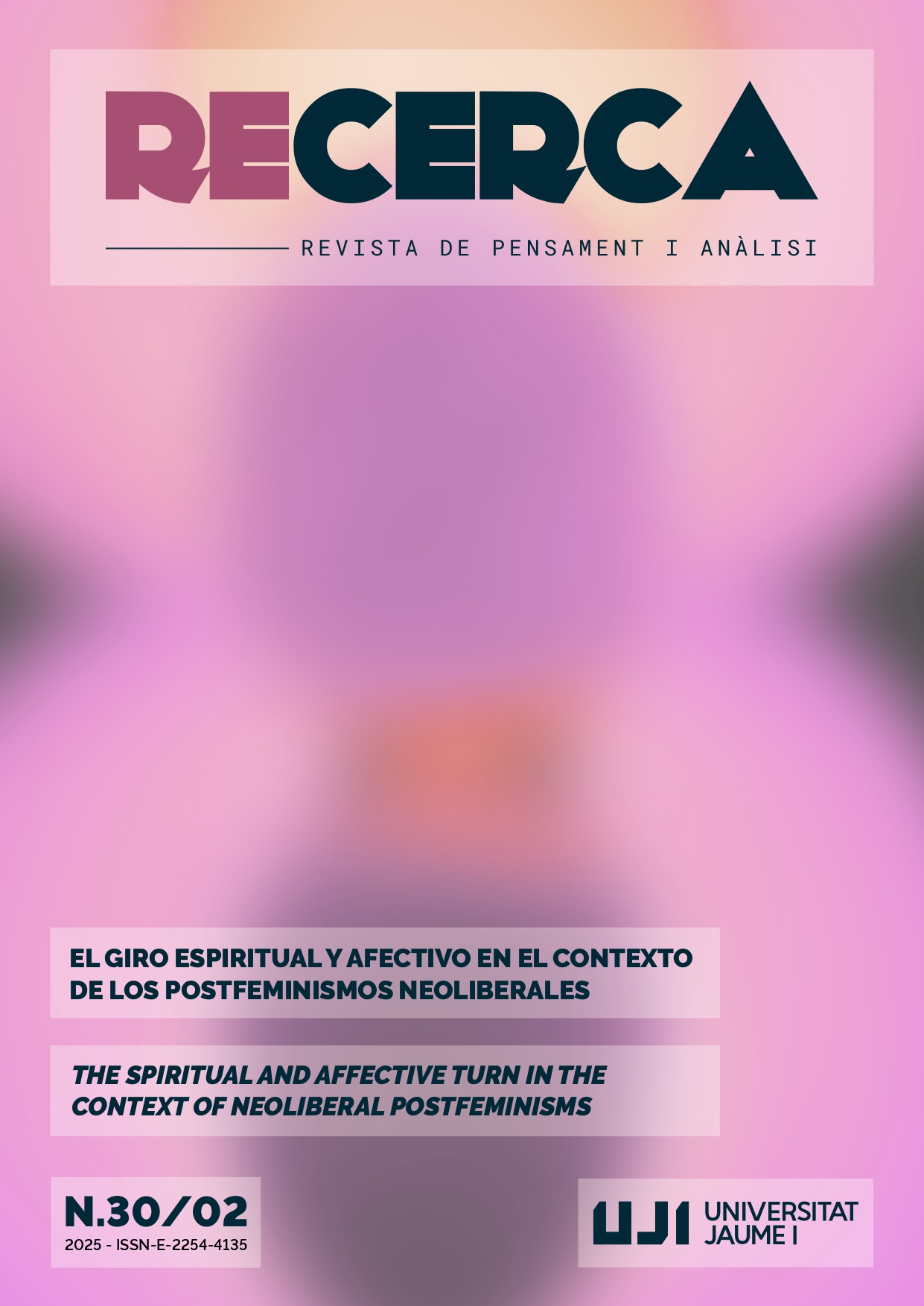«Yo también quiero ser virtual»: cuatro influencers no humanas antropomorfas en Instagram
Contenido principal del artículo
Resumen
En 2024 el concurso Miss AI, organizado por World AI Creator Awards (WAICA), con un jurado mixto (humanos e influencers no humanos), evaluó «la belleza, tecnología e influencia digital» de las influencers no humanas y premió a tres. En el marco de la fase actual del Tecnoceno (Costa, 2022), analizamos cuatro cuentas de influencers no humanas antropomorfizadas, dos participantes del concurso Miss AI (@kenza.layli, ganadora, y @fit_aitana, jurado) y dos pioneras e históricas en el campo del marketing de influencers (@lilmiquela, @shudu.gram) preguntándonos cómo son construidas y qué sentidos y prácticas aparecen en las interacciones entre las influencers digitales y sus seguidores. Indagaremos cómo la premisa «Be your own robot» (@lilmiquela) y, su contrapartida, «Yo también quiero ser virtual» (seguidor de @fit_aitana), construyen una «diversidad no humana» que promueve la indistinción entre lo humano y lo no humano, pasibles de ser abordadas desde el feminismo posthumanista (Braidotti, 2022; Haraway, 2018) y el xenofeminismo.
Descargas
Detalles del artículo
Citas
Abidin, Crystal (2015). Communicative Intimacies: Influencers and Perceived Interconnectedness. Ada, 8, 1-16.
Ahmed, Sara (2019). La promesa de la felicidad. Una crítica cultural al imperativo de la alegría. Ciudad Autónoma de Buenos Aires: Caja Negra.
Albet Castillejo, Laura (2023). El dispositivo fitness en el salutismo posfeminista: discursos de empoderamiento femenino a través del disciplinamiento corporal. Astrolabio, 31, 46-72.
Andersson, Victor y Tim Sobek (2020). Virtual avatars, virtual influ-encers & authenticity. Tesis de Máster. Gotemburgo: University of Gothenburg.
Audrezet, Alice y Koles, Bernadett (2023). Virtual Influencer as a Brand Avatar in Interactive Marketing. En Wang, Cheng Lu (Ed.). The Palgrave Handbook of Interactive Marketing. Palgrave Macmillan. https://doi.org/10.1007/978-3-031- 14961-0_16
Badu, Ama (s/f). Ama Badu helps write Shudu’s story and gives her a voice. The diigitals. Recuperado de: https://www.thediigitals.com/ama [Consultado el 30 de julio de 2024].
Baklanov, Nick (9 de noviembre de 2020). The top Instagram virtual influencers 2022. Hype Auditor. Recuperado de: https://hypeauditor.com/blog/the-top-instagram-virtual-influencers-in-2020/
Baklanov, Nick (7 de diciembre de 2021). The top Instagram virtual influencers 2021. Hype Auditor. Recuperado de: https://hypeauditor.com/blog/the-top-instagram-virtual-influencers-in-2021/#top-instagram-virtual-influencers-list
Baklanov, Nick (21 de diciembre de 2022). The top Instagram virtual influencers 2022. Hype Auditor. Recuperado de: https://hypeauditor.com/blog/the-top-virtual-instagram-influencers-in-2022/
Balistreri, Maurizio (2021). Sex robot. El sexo y las máquinas. Ma-drid: Malpaso.
Barboza, Romina Andrea (2025). Influencers no humanos en Insta-gram: entre el posfeminismo y el transhumanismo. Aposta, 104, 113-126. https://apostadigital.com/revistav3/hemeroteca/rabarboza.pdf
Braidotti, Rosi (2022). Feminismo posthumano. Barcelona: Gedisa.
Cano, Virginia (2018). Solx no se nace, se llega a estarlo. Ego-liberalismo y auto-precarización afectiva. En Nijensohn, Malena (Comp.). Los feminismos ante el neoliberalismo (pp. 27-38). Ciu-dad Autónoma de Buenos Aires: La Cebra.
Cleland, Lucy (2024). British Brands 2024 Cover. Country & Town House. Recuperado de: https://www.countryandtownhouse.com/culture/ai-supermodels-gbb-24-cover-story/ [Consultado el 24 de julio de 2024].
Costa, Flavia (15-17 de mayo de 2008). El dispositivo fitness en la modernidad biológica. Democracia estética, just-in-time, críme-nes de fealdad y contagio [Ponencia, en línea]. Jornadas de Cuerpo y Cultura de la UNLP, La Plata, Argentina. Disponible en Memoria Académi-ca: http://www.fuentesmemoria.fahce.unlp.edu.ar/trab_eventos/ev.647/ev.647.pdf
Costa, Flavia (2022). Tecnoceno. Algoritmos, biohackers y nuevas formas de vida. Buenos Aires: Taurus.
Federici, Silvia (2022). Ir más allá de la piel: repensar, rehacer y reivindicar el cuerpo en el capitalismo contemporáneo. Buenos Aires: Tinta Limón.
Gill, Rosalind (2008). Culture and subjectivity in neoliberal and post-feminist times. Subjectivity, 25, 432-445.
Gill, Rosalind (2016). Post-postfeminism?: new feminist visibilities in postfeminist times. Feminist Media Studies, 16, 610-630.
Gill, Rosalind y Orgad, Shani (2022). Confidence culture. London: Duke University Press.
Haraway, Donna (2018). Manifiesto para cyborgs. Ciencia, tecnolo-gía y feminismo socialista a finales del siglo XX. Mar del Plata: Letra Sudaca Ediciones. (Obra original publicada en 1991)
Hernández Sampieri, Roberto, Fernández Collado, Carlos y Baptista Lucio, Pilar (2010). Metodología de la investigación. México: McGraw Hill. (Quinta Edición)
Hester, Hester (2018). Xenofeminismo. Tecnologías de género y po-líticas de reproducción. Buenos Aires: Caja Negra.
Laboria Cuboniks (2017). Xenofeminismo: una política por la aliena-ción. En Avanessian, Armen y Reis, Mauro (Comps.). Aceleracio-nismo. Estrategias para una transición hacia el postcapitalismo (117-133). Buenos Aires: Caja Negra.
Land, Nick (2017). Colapso. En Avanessian, Armen y Reis, Mauro (Comps.). Aceleracionismo. Estrategias para una transición ha-cia el postcapitalismo (117-133). Buenos Aires: Caja Negra.
Liu, Fanjue y Lee, Yu-Hao. (2024). Virtually responsible? Attribution of responsibility toward human vs. virtual influencers and the mediating role of mind perception. Journal of Retailing and Consumer Services, 77, 103685. https://doi.org/10.1016/j.jretconser.2023.103685
Robinson, Ben (2020). Towards an Ontology and Ethics of Virtual Influencers. Australasian Journal of Information System, 24. https://doi.org/10.3127/ajis.v24i0.2807
Sands, Sean, Ferraro, Carla, Demsar, Vlad y Chandler, Garreth (2022). False idols: Unpacking the opportunities and challenges of falsity in the context of virtual influencers. Business Horizons, 65(6), 777788.
Thomas, Verónica y Fowler, Kendra (2021). Close encounters of the AI kind: Use of AI influencers as brand endorsers. Journal of Ad-vertis-ing, 50(1), 1125. https://doi.org/10.1080/00913367.2020.1810595
Time (30 de junio de 2018). The 25 Most Influential People on the Internet. Recuperado de: https://time.com/5324130/most-influential-internet/ [Consultado el 10 de julio de 2024].
Torrano, Andrea (2022). Cyborg. En Parente, Diego, Berti, Agustín, Celis, Claudio (Coords.). Glosario de filosofía de la técnica. Bue-nos Aires: La Cebra.
Virtual Humans (s/f). Recuperado de: www.virtualhumans.org [Consultado el 17 de julio de 2024].
World AI Creator Awards (s/f). Recuperado de: https://miss-ai.webflow.io [Consultado el 8 de julio de 2024]
Xie-Carson, Li, Benckendorff, Pierre y Hughes, Karen (2023). Not so different after all? A netnographic exploration of user engage-ment with non-human influencers on social media. Journal of Business Research, 167, 114-149.


